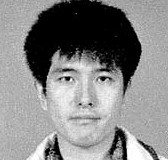
b: 1970
Yūji Nishizawa
Summary
Name:
Yūji NishizawaYears Active:
1999Birth:
September 08, 1970Status:
ImprisonedClass:
MurdererVictims:
1Method:
StabbingNationality:
Japan
b: 1970
Yūji Nishizawa
Summary: Murderer
Name:
Yūji NishizawaStatus:
ImprisonedVictims:
1Method:
StabbingNationality:
JapanBirth:
September 08, 1970Years Active:
1999Date Convicted:
March 23, 2005bio
Yūji Nishizawa was born on September 8, 1970, in Tokyo, Japan. He grew up in the Edogawa ward of Tokyo. As a child, not much is known about his family or early life. However, it is clear that he faced challenges as he grew older.
Nishizawa struggled with mental health issues throughout his life. It was reported that he had been prescribed antidepressant medication. He was known to have taken a large dose of SSRI medication before a significant event in his life. This medication is commonly used to treat depression and anxiety.
From a young age, Nishizawa developed a strong interest in flight simulators. He often enjoyed the experience of flying virtually. This hobby reflected his fascination with aviation, which later became a key part of his life.
As an adult, Nishizawa was 28 years old at one point and had become unemployed. His unemployment may have contributed to his emotional struggles and desire for change. He had been living in Edogawa, where he kept to himself and spent time focusing on his interests.
As Nishizawa navigated his early adult life, he also faced difficulties in his social interactions. Reports later indicated that he had Asperger syndrome, a condition on the autism spectrum that can affect social skills and communication. This diagnosis may explain some of the challenges he encountered in connecting with others.
murder story
On July 23, 1999, Yūji Nishizawa hijacked All Nippon Airways Flight 61, which was taking off from Tokyo's Haneda Airport and headed for New Chitose Airport in Hokkaido. About 25 minutes after takeoff, at 11:48 A.M. JST, he used a 20-centimeter kitchen knife to force a flight attendant to let him into the cockpit. Inside, he attacked the captain, Naoyuki Nagashima, stabbing him in the chest. Nishizawa then forced the first officer, Kazuyuki Koga, out of the cockpit.
As Nishizawa controlled the plane, Captain Nagashima managed to inform Air Traffic Control about the hijacking. He eventually lost his life due to the stab wounds. The aircraft, meanwhile, descended to an altitude of 300 meters, which heightened the danger during the incident.
The crew worked together to subdue Nishizawa. An off-duty pilot, Junji Yamauchi, who was also on board, took control of the aircraft. The co-pilot Koga returned to the cockpit and alerted air traffic controllers of the emergency situation, stating that the captain had been stabbed and requested an ambulance.
At 12:14 P.M. JST, the plane made an emergency landing back at Haneda Airport, where Nishizawa was arrested immediately. After the aircraft landed, medical personnel confirmed that Captain Nagashima had died from his injuries. Nishizawa was charged with murder.
Nishizawa had smuggled the knife onto the plane by exploiting security flaws at Haneda Airport. He had previously checked in for another flight with the knife in his checked baggage and retrieved it upon returning from that flight. He had also planned to hijack the airline one day earlier, but his parental intervention delayed his plans.
Following the hijacking, security measures at airports across Japan were significantly revised. Though found guilty on March 23, 2005, he was determined to have been of unsound mind at the time of the hijacking. As a result, Judge Hisaharu Yasui sentenced him to life imprisonment, deeming him only partially responsible due to mental illness.
Initially, the Japanese media withheld Nishizawa’s identity due to his psychiatric condition. However, on July 27, 1999, the conservative newspaper Sankei Shimbun broke precedent and published his name and photo, citing the incident as a “serious crime.”
The family of Captain Naoyuki Nagashima filed a civil lawsuit against All Nippon Airways, the Japanese government, and Nishizawa’s parents, citing negligence in airport security. A settlement was reached on December 21, 2007, though the terms were not publicly disclosed.